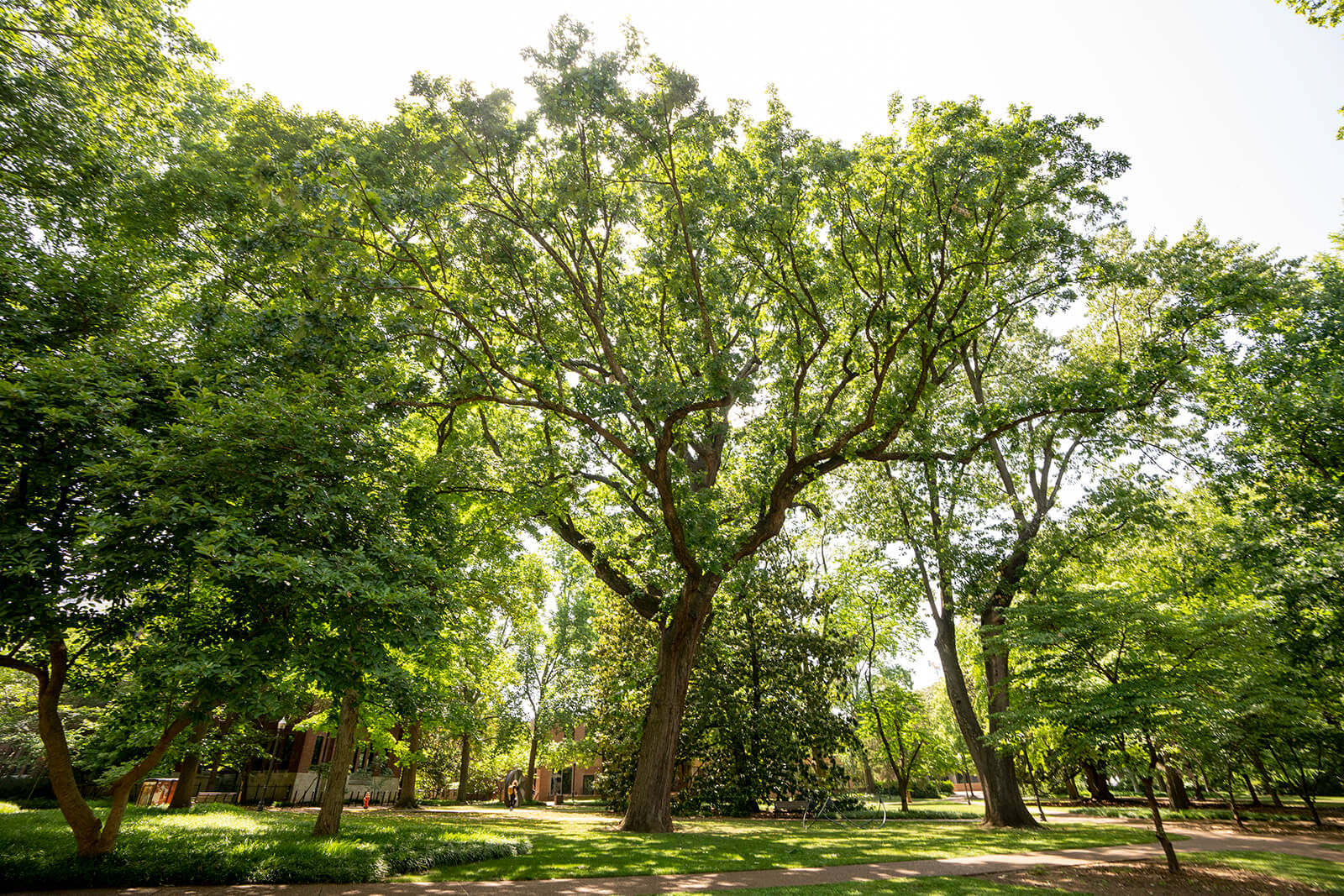LIVING LABORATORY
Educational as well as beautiful, Vanderbilt’s arboretum is 150 years in the making

In March of 1873, Bishop Holland McTyeire convinced Cornelius Vanderbilt to contribute an initial $500,000 to found Vanderbilt University. By May, McTyeire had negotiated the purchase of several tracts of farmland on a small hill west of Nashville to become the campus. Except along surrounding roadways, there were very few trees.
McTyeire immediately began to shape the character of the campus through a massive tree-planting campaign. He supervised the planting of hundreds of small trees all around where the main campus building (now Kirkland Hall) was being constructed.
The trees were an evident source of pride for McTyeire. Stella Vaughn, who grew up on campus as the daughter of mathematics professor William J. Vaughn, recalled in her unpublished memoirs that McTyeire “took his exercise by walking over the campus watching the growth of the trees whose planting he had supervised.” McTyeire considered the trees to have an educational purpose in addition to an aesthetic one, reflected in the designation of the campus grounds as “the Arboretum” as early as 1878. By 1890, the campus was an island of trees, still surrounded by a sea of agricultural fields.
In about 1927, Mary Henderson Kirkland, the wife of Chancellor James Kirkland, and others founded the Vanderbilt Garden Club, a group of women interested in improving the appearance of campus. The club initially focused on planting flower beds and shrubs, but it was soon suggested the group should follow the example of Bishop McTyeire and add to the trees on campus.
The club was revitalized after World War II by the arrival of Margaret Branscomb, the wife of new chancellor Harvie Branscomb. The club was regularly involved in organizing the planting of trees to beautify the areas around new buildings in consultation with Superintendent of Grounds Jack Lynn. Major efforts included supporting a screen of magnolias along the campus perimeter during the 1950s and plantings around the newly constructed Branscomb Quadrangle in the late 1960s.
A well-known feature of Vanderbilt’s arboretum is the labeling found on many campus trees. This effort began as a project of the Garden Club in 1953, along with the first complete inventory of trees since 1879. In 1968, Mrs. James Mapheus Smith donated $15,000 to establish an endowment in memory of her husband to support tree labeling and planting. This fund has supported the purchase of the hundreds of aluminum labels attached to the trees on campus. As a tree grows, the coil spring that surrounds the nail keeps the label in position without damaging the tree.
In 1989, the campus was granted official arboretum status by the American Association of Botanical Gardens and Arboreta (now the American Public Gardens Association). The statement of purpose reads: “To enhance the university grounds and to help educate students and visitors to the variety of plants that can be used in Middle Tennessee for landscaping.”
Today, more than 6,000 trees make up Vanderbilt’s 333-acre arboretum and fall under the supervision of Campus Planning and Construction, with the university’s landscape architect serving as arboretum director. Each year 150–200 new trees are planted on campus as part of landscaping for new construction and to replace trees that are lost.
Read the latest about Vanderbilt’s Bicentennial Oak.
